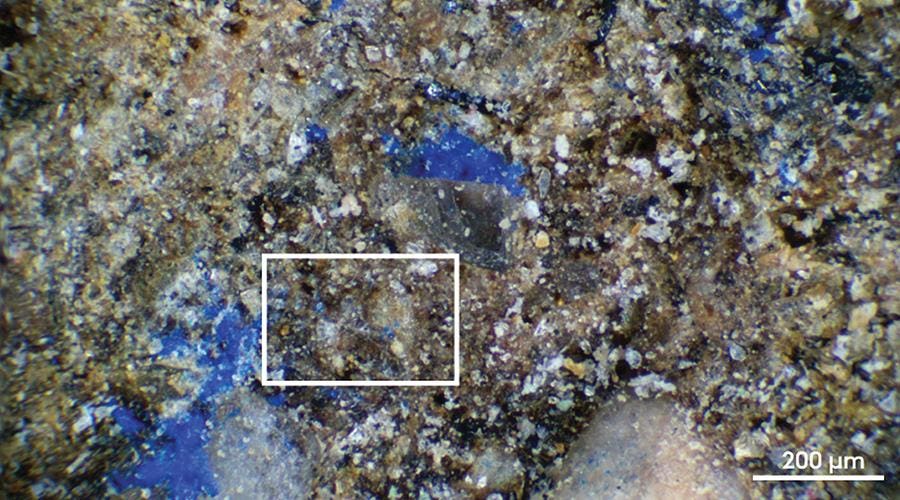Both Neanderthals and early Homo Sapiens created art. Their cave paintings from the early Stone Age have been found across Europe, Africa and Asia and often bear characteristically earth-tone colours. They used red, brown, black and yellow — but never blue. Historically, blue doesn’t really come up in art until the Egyptians started using it about 5000 years ago. But now, a new discovery in Germany shows that other blue pigments have been around in Europe several millennia earlier. They just weren’t used in cave art, but they might have been used as cosmetics.

Traces of blue residue were found on a bowl dating back to the late Stone Age.
Wisher et al., Cambridge University Press/Antiquity Publications Ltd
Between 1976 and 1980 archeologists found many artefacts from the Final Paleolithic era at e dig site not far from Frankfurt. More recently, researchers were able to pinpoint the age of the early settlement in this area to be from around 14,000 to 13,000 years ago. As part of that new investigation, scientists also revisited the artefacts that were dug up forty years earlier to take a closer look at them.
This is when they noticed that an old stone bowl had small traces of blue pigment inside of it. None of the other materials they found had any blue on it, but even this small amount suggested that blue pigments were used much earlier than previously believed.
Blue isn’t as common in nature as many other colours, so the research team wanted to find out where it came from. They used a range of different microscopy, X-ray and infrared techniques to study the blue compound in more detail. Zooming in this closely also revealed more tiny blue spots in the bowl, suggesting that it had once been spread all over the surface. That could mean that the bowl was once used specifically to hold this blue pigment.
From a chemical analysis of the compound the researchers learned that it had many copper atoms. They further narrowed it down to one specific material: azurite. This is very different from other blue dyes such as indigo or Egyptian blue. Azurite is a mineral that can be formed from copper ore, and it can be naturally found in the ground in areas not far from the archeological site. Azurite is usually close to the surface, so it wouldn’t have been hard to collect.
Blue pigment azurite could have been used as make-up
But if the Stone Age inhabitants of this part of Europe has blue pigment, why hasn’t any blue cave art been found? And why have no other remnants of blue been picked up on other artefacts from this period? The researchers think that there might be more blue pigment residues on other tools from this era that just haven’t been noticed yet. After all, they found this stone bowl more than forty years ago and only recently spotted the blue. And as for why it’s not used in art, they suspect that the blue pigment had another purpose that didn’t leave any traces in the archeological record, such as body decoration.
“The presence of azurite shows that Palaeolithic people had a deep knowledge of mineral pigments and could access a much broader colour palette than we previously thought – and they may have been selective in the way they used certain colours”, lead researcher Izzy Wisher told Aarhus University.
Historically, azurite has been found in Neolithic female burial sites in Turkey or on hair and eyes of Bronze Age figures from Greece, which suggests that it could have been used cosmetically. The Stone Age discovery predates those discoveries, but it could have had a similar role. If Paleolithic people used blue to decorate their bodies and faces, there wouldn’t be any record of that now, except on the occasional stone bowl like here.
So Stone Age artists did have access to blue pigments. They just didn’t seem to use it in any of their cave art, but might have used it as make-up instead.

